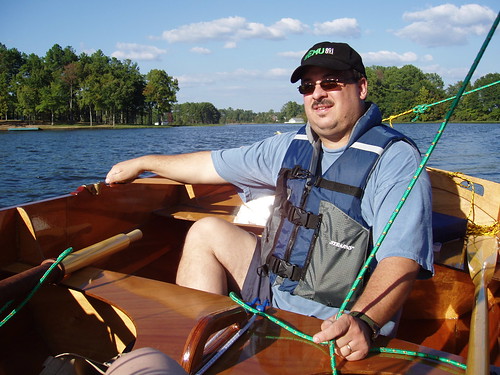Eyes on the prize

I was thrilled to discover today that CLC has posted some new photos of the Passagemaker Dinghy on their web site. I was especially pleased to see more pictures of the boat under sail, which is the mode I plan to use most often. The paint scheme they use- bright white on the lower outer hull and varnish on the rest- looks really good, and is the finish I intend for my boat. The pictures also provide more detail than I have yet seen of the gunter rig. I haven't yet heard specifically what the difference between a gaff rig and a gunter rig is. There is a distinction based on the angle of the top spar. Nearly parallel to the mast means gunter; at some greater (yet undefined) angle means gaff, I gather. I'll put that on my list of things to ask my sailing friends in Maine next time!


1 Comments:
Peter, here's my understanding of the difference between a gaff rig and gunter rig.
On a gaff rig, the sail has four sides. Instead of coming to a point at its head (top), the sail is extended by attachment to a gaff, one type of spar. (A boom is another type of spar.)
On a gunter rig, the sail is a three sided and the mast has an extension (called a club) that slides up and down. This rig can be stowed more easily than one with a single long mast. That's especially handy when you tow the boat on a trailer.
If that's as clear as mud, check out Google Images using the two phrases.
BTW, both are fore and aft rigs like the old coastal schooners Grace Bailey and Mercantile run out of Camden, Maine by Maine Windjammer Cruises.
I don't know anything about the handling difference between the two rigs, but it would be interesting to hear from someone who does.
Post a Comment
<< Home